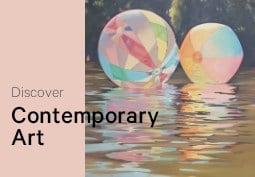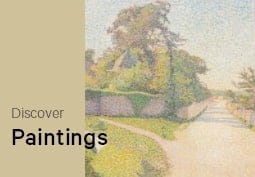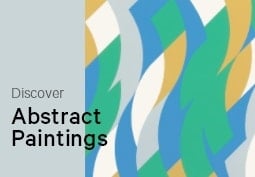Interviews
Artist Interview: Nevena Prijic on Her Creative Process, Inspiration and a New Mural at the Worcester Art Museum
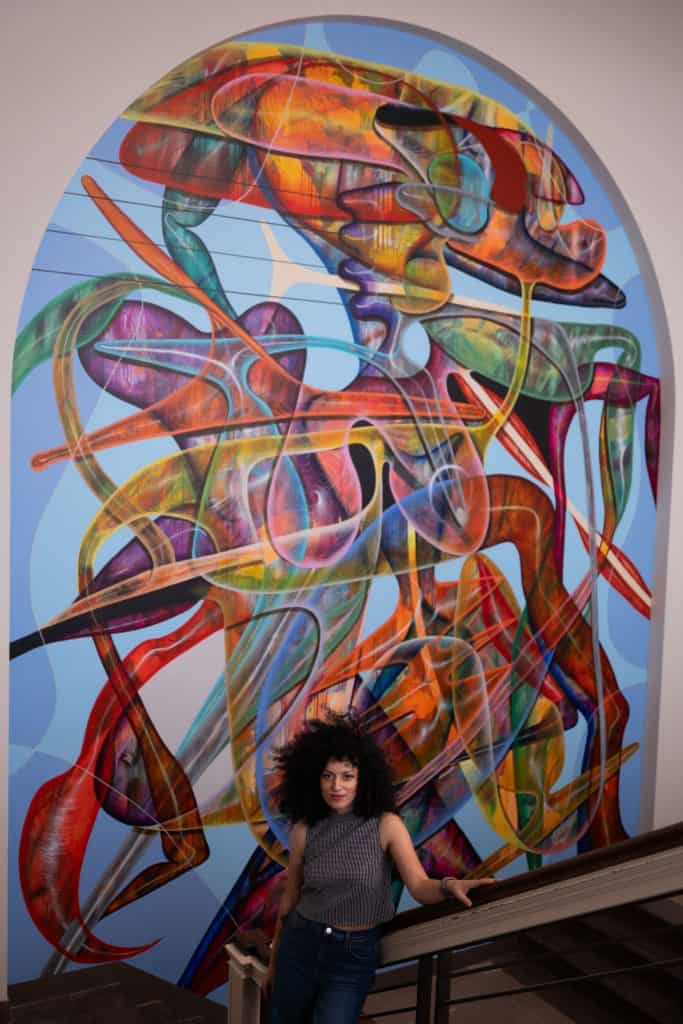
By Shira Wolfe
“You know how the Vinča figurines look very simplified, and in that sense they also look contemporary? They look androgynous too, they’re non-binary. And I started developing this, they would just be these universal beings combining plants, humans, animal body parts, and connecting the past and the future. It’s like a hybrid creature.”
Nevena Prijic
Nevena Prijic is a Serbian artist based in Los Angeles. Her vibrant abstract-figurative paintings combine intricate compositions with biomorphic forms—where plants, animals, humans and machines meet. Taking inspiration from artifacts of the Neolithic Vinča culture, active between c. 5400 and 4500 BC in present-day Serbia and Kosovo and the largest settlement in European culture at the time along with the Cucuteni-Trypillia culture in present-day Ukraine and Romania, she develops these forms within her futuristic, transformative compositions. Prijic suggests a freedom of being through the avoidance of binary depictions and an emphasis on the interconnectedness of all things.
Shira Wolfe spoke with Prijic on the occasion of her new mural Voyager (2023) at the Worcester Art Museum (WAM).
How was the process of creating the mural at the Worcester Art Museum? You were there for two weeks right, that’s not much time!
I was there for 17 days. I’m insane, I work fast. I can’t really do anything else when I’m that focused. Especially the first few days, I was working non-stop. Until I could see that it was really coming along, I couldn’t relax. It also took getting used to because I was exposed working at the museum. So people were walking by or passing through, you know, they would go to look at the Kandinsky or some other masterpieces, and then pass by me.
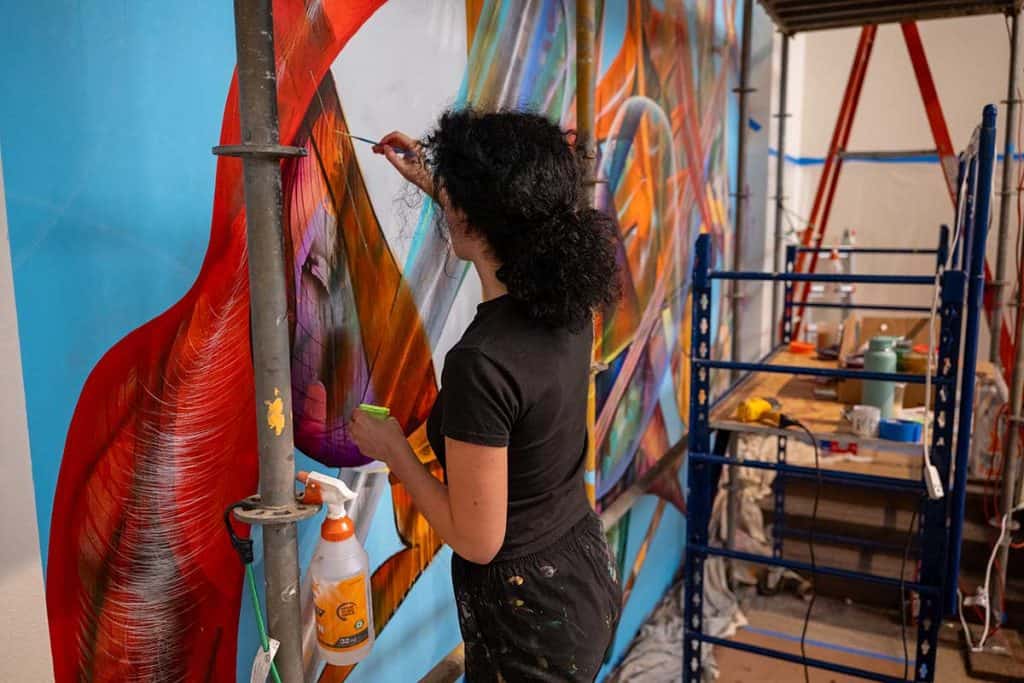
Have you ever done this kind of public mural before?
I’ve only helped other artists complete their murals, but this is completely different because I had to adjust my method of painting that I usually do on canvas. You know, you have this whole system, and it’s different, because it’s on a wall, you can’t move it, and it’s huge. But in the end I think it looks great. My friends would say it looks exactly the same as on a canvas. There are a lot of details, and because it’s so big and exposed, it’s great because you can see all those details really well.
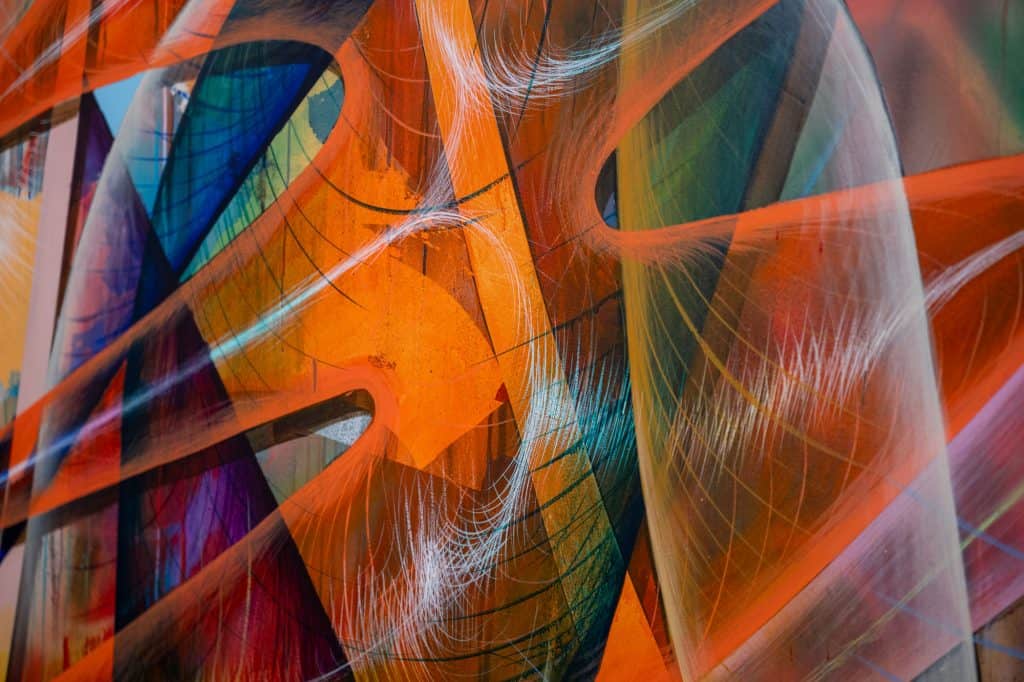
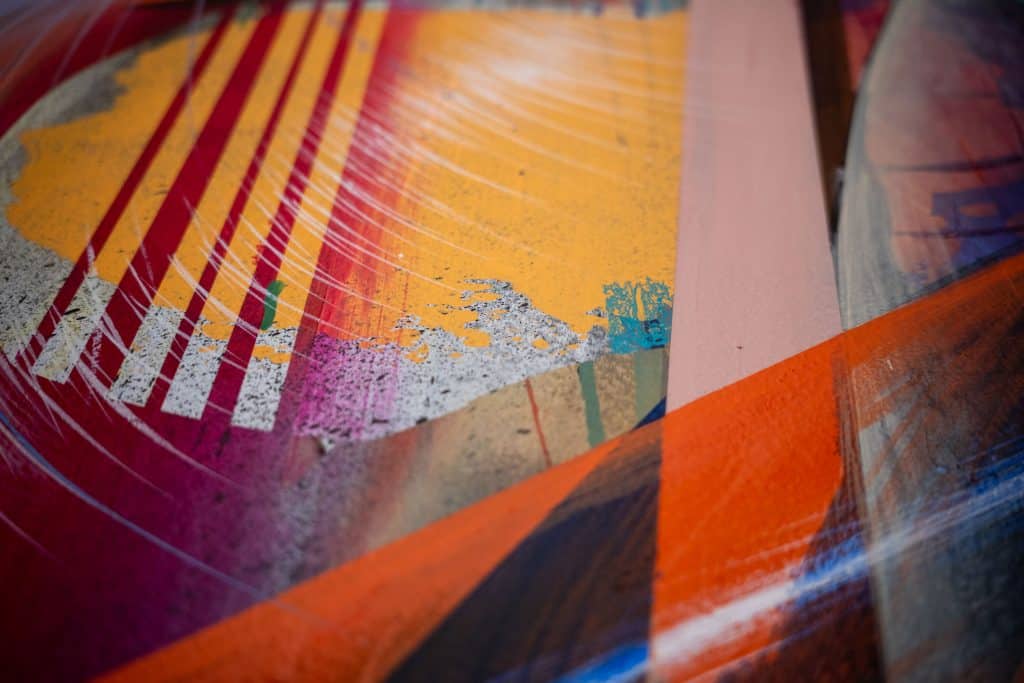
Will it stay there permanently?
It’s going to be there until the spring of 2025. I’m the first one who ever painted on that wall, and then they’ll do a rotation of artists every few years.
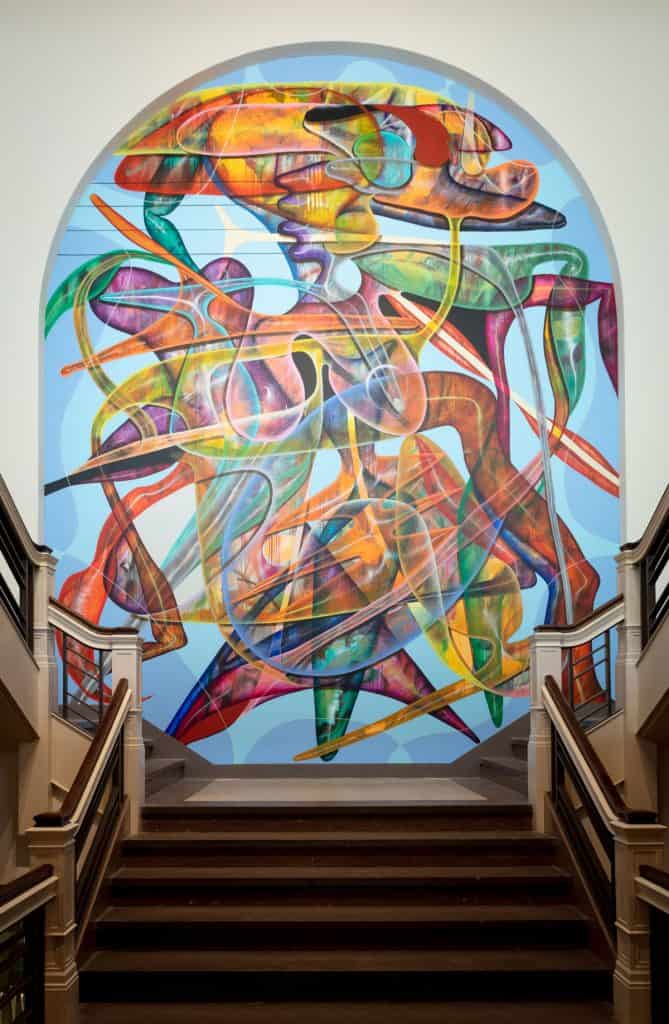
What is the story behind the mural? It obviously developed very naturally from your artistic practice and what you’ve been doing the past years.
I had a studio visit with a curator from the WAM in January this year, and we talked about the inspiration behind my work and the Neolithic Vinča culture, how it developed, and how the figures and the forms kind of started their own evolution. In the museum you see ancient artifacts and the progression to modern times. The mural is set between the third and fourth floor, the modern art collection is on the fourth floor, and right across from the mural is an ancient Mayan totem. The past and the future are all around. So I really wanted to do a sketch that relates to Vinča, where there are still traces, like the alien-looking head, the neck, the shoulders, the trunk, and the leg, but at the same time is transformed. You know how the Vinča figurines look very simplified, and in that sense they also look contemporary? They look androgynous too, they’re non-binary. And I started developing this, they would just be these universal beings combining plants, humans, animal body parts, and connecting the past and the future. It’s like a hybrid creature.
“In LA I discovered nature. So I started thinking about the similarities between plants and humans and machines, and began researching all that. I wanted to create something new, a new kind of human or being.”
Nevena Prijic
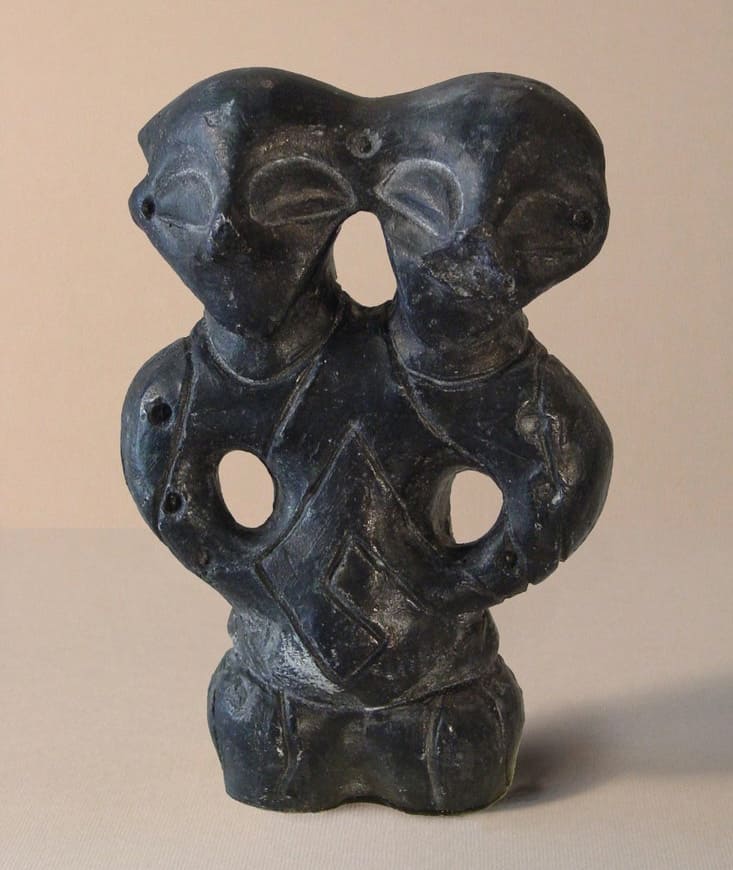
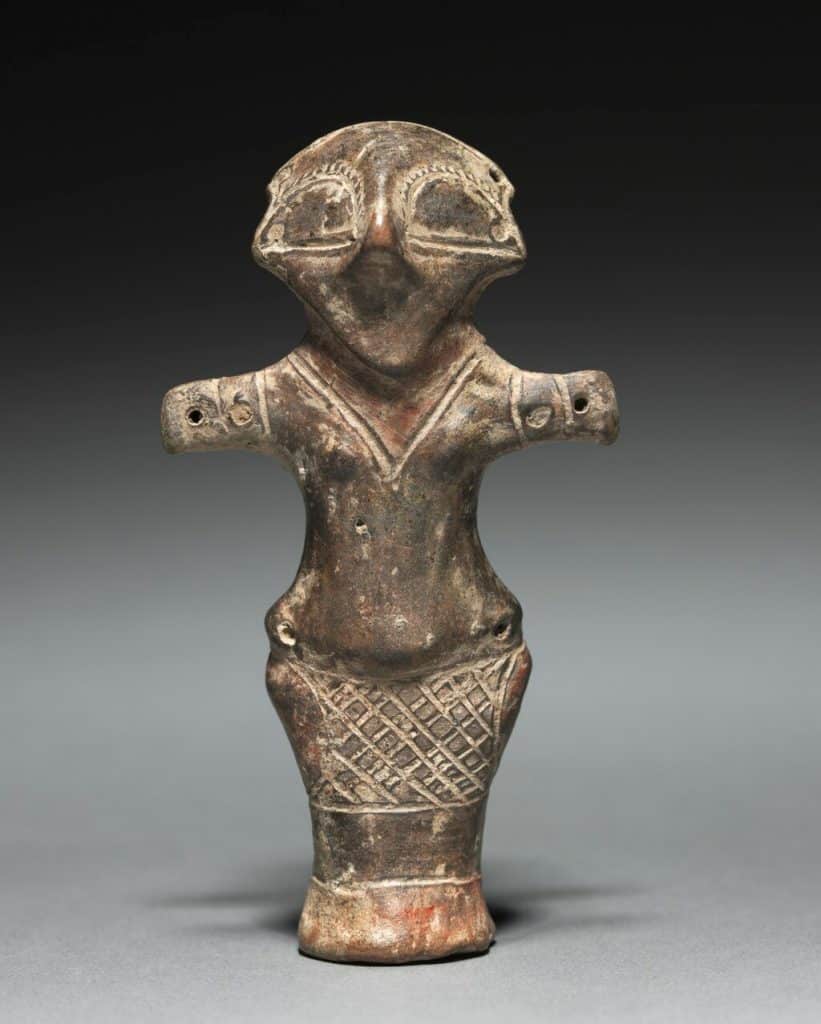
Can you say more about how you started working with the Vinča culture? It was when you left Serbia for the States, right?
The Vinča culture is very famous in Serbia, and my dad was using those as a reference in his fine-print making. During one of my visits back home, maybe five years ago, my dad was like, “Do you want to take some of my artworks with you?” And I realized that I needed those forms to click with the drawings I was doing at the time. I was getting out of figurative painting and was trying to find ways to present a figure without being recognizable as a human. And with this, they represent a figure, but neither male nor female. So I started using those shapes of figurines and I would paint intricate drawings on top of them. Then I blended the figurine shapes with the drawings I was doing of organic shapes and cells, almost like what happens inside the body. When I merged those two, this came to be. It’s almost like creating a being in nature.
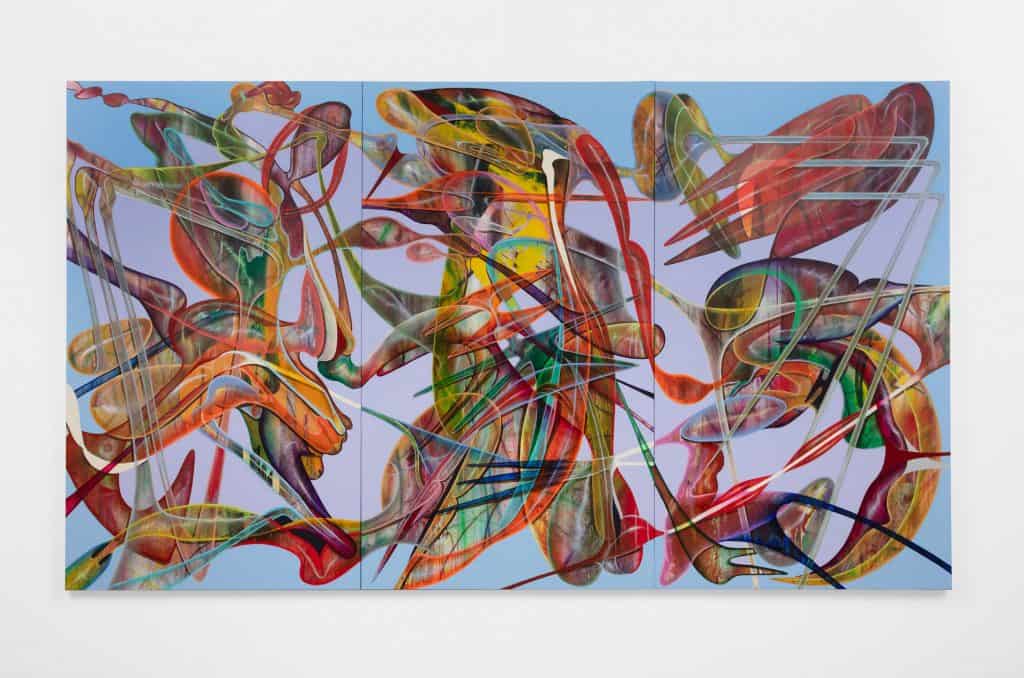
It must feel like a very free space.
Yes, it’s very creative, there are a lot of possibilities now. In my older work, it was a lot about transformation as well, how a body can change, how we can look like anything and anyone. It’s funny, I was working on how much the media impacted people here in Serbia, but once I moved to LA, I wasn’t interested in it anymore, and now I barely engage with this. In LA, I discovered nature. So I started thinking about the similarities between plants and humans and machines, and began researching all that. I wanted to create something new, a new kind of human or being.
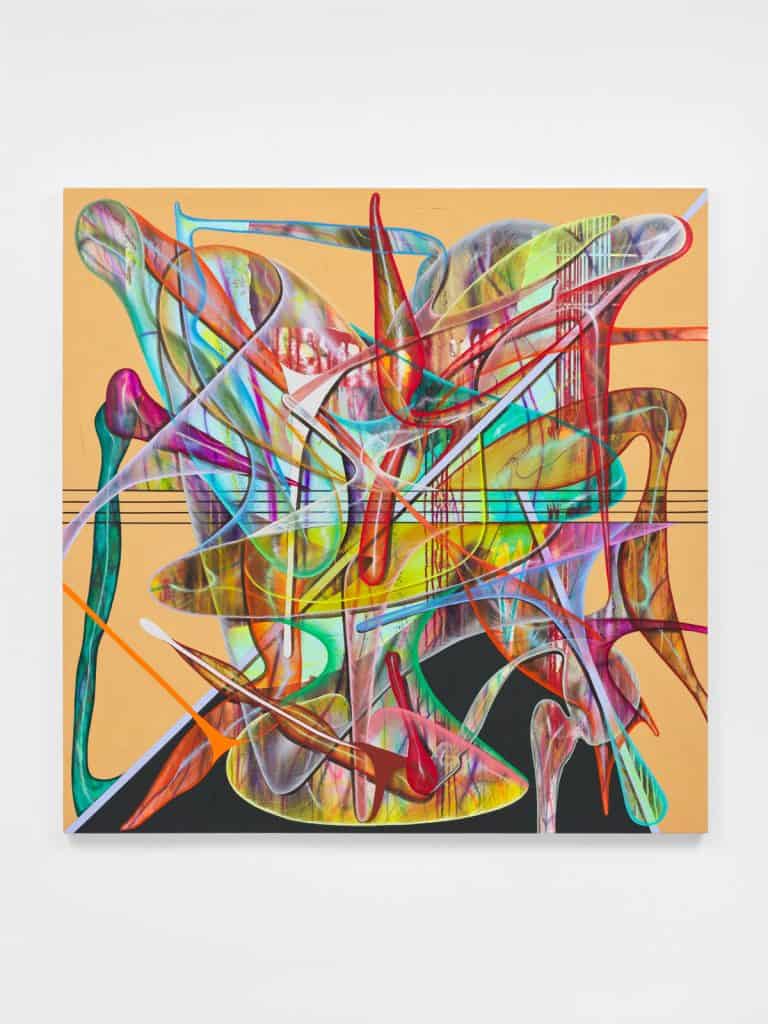
How do you feel now that you’ve established your new creative language?
What I like about this phase is that with all the previous work, before I moved to the States, it was good and I liked it, but there was no room to develop it, and I would feel stuck. I don’t want to just create a new product, repeating the same thing over and over again. But with this more abstract work, there is the possibility of constant change and development. The progression is kind of insane. With every painting, I try to push a little bit. Taking a step back you can actually tell there are big changes.
I’m curious, who are some of your favorite artists?
My obsession for the human body and anatomy comes from the Italian Old Masters, when I was young I would be copying artworks by Leonardo Da Vinci. And even now the way I paint has traces in that, because the lines that I use for the top layer, the cross-hatching, have their root in those Renaissance drawings. Whenever I’m interested in something, then I discover artists who are doing something similar. Some contemporary artists whose work I find inspiring are Ivana Bašić, Christina Quarles, Alicia Adamerovich, and Teresa Chromati. A lot of times I’m drawn to sculpture too, because my paintings are quite sculptural.
What are some upcoming projects for you?
Next year I’ll have an exhibition in Milan with my LA gallery M+B, since they have spaces in Milan and Brazil too. The Milan space is a beautiful apartment where you can take your time and discuss art, it’s more homey than the in-and-out experience of the white cube. Other than that, I’ll spend more time developing and not rushing too much. Having a little bit of open space for thinking and experimenting.
Relevant sources to learn more
Read other artist interviews in Artland Magazine:
David Shrigley: “Do What You Want to Do, Try Not to Get Bored”
Land of Dreams – Interview with Shirin Neshat
Artist Interview: Jeffrey Gibson
Follow Nevena Prijic’s work here:
Worcester Art Museum
Nevena Prijic website
Nevena Prijic on Instagram
M+B Gallery
Wondering where to start?
